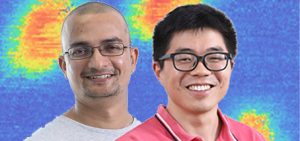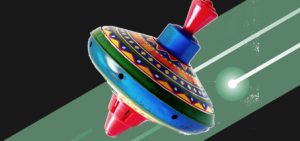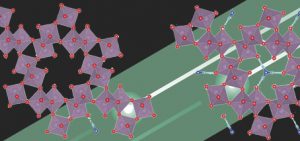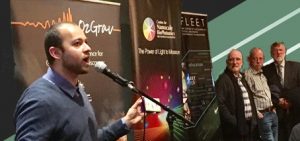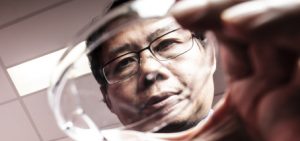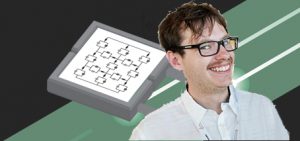Engage
See news from around FLEET, below
Catch up on all past issues of FLEET News newsletter
FLEET News
FLEET’s goal is to achieve 30% representation of women at all levels across FLEET. To begin to move towards this goal, we needed innovative approaches that would allow us to begin ‘shifting the dial’. One innovative initiative that has met with success was FLEET’s new women-only Fellowships, offered in multiple locations, and across all fields of study in the Centre. …
FLEET welcomes three new research fellows, who will be working in diverse roles across the Centre: Dr Semonti Bhattacharyya (Monash) Dr Peggy Qi Zhang (UNSW) Dr Iolanda Di Bernardo (Monash) The three new positions have been filled via the Women in FLEET fellowship, which forms part of FLEET’s mission to create workplace diversity and retain female scientists within STEM. Dr …
Welcome to Francesca Iacopi, who joins FLEET as a Scientific Associate Investigator. Professor Iacopi has over 20 years’ industrial and academic research expertise in semiconductor technologies, and currently leads Communications and Electronics Engineering at the University of Technology, Sydney. Francesca’s work at UTS translates scientific advances in nanomaterials and novel device concepts into implementable technologies. Within FLEET, she will investigate …
In a paper released today in Science Advances, UNSW researchers describe the first observation of a native ferroelectric metal. The study represents the first example of a native metal with bistable and electrically switchable spontaneous polarization states – the hallmark of ferroelectricity. “We found coexistence of native metallicity and ferroelectricity in bulk crystalline tungsten ditelluride (WTe2) at room temperature,” explains …
• RMIT–UNSW collaboration combines theory, experimental expertise • ‘Spintronic’ applications promise faster, more efficient computing • New magnetic properties of 2D Fe3GeTe2 (FGT) discovered A theoretical–experimental collaboration across two FLEET nodes has discovered new magnetic properties within 2D structures, with exciting potential for researchers in the emerging field of ‘spintronics’. Spintronic devices use a quantum property known as ‘spin’, in …
Molybdenum based compounds could provide key to hydrogen production for future zero-emissions energy RMIT/Monash collaboration opens promising route towards alkaline hydrogen production A FLEET study combining experimental expertise at RMIT with theoretical modelling at Monash University opens a new route towards efficient, cost-effective production of hydrogen. Researchers discovered that ammonium-doped, hexagonal molybdenum oxide (MoO3) displays extremely promising electronic and material …
Seminal, seventy-year-old theory of turbulence experimentally verified for first time Applications range from Jupiter’s Great Red Spot to electron movement in superconductors Images and video available Two Australian studies published this week offer the first proof of a 70-year-old theory of turbulence. “The studies confirm a seminal theory of the formation of large-scale vortices from turbulence in 2D fluid flow, …
Three events last week allowed FLEET members to develop valuable, transferable communications and outreach skills, as well as providing a chance for FLEET to strengthen links with other ARC Centres of Excellence. A pitch training session for researchers from three ARC Centres introduced key communications concepts such as choosing the most effective lead, tailoring the pitch to the audience, presenting …
Dr Julie Karel conducts research at the intersection of materials science and condensed matter physics to develop new materials for emerging low-energy nanoelectronic and magnetoelectronic devices. Originally from the US, Julie developed new thermal interface materials to improve mobile-device performance at Intel, and was a postdoctoral researcher at the Max Planck Institute in Germany. In materials design, Julie uses complete …
Iron-doping of the topological insulator Sb2Te3 results in useful electronic and magnetic properties, quantified in a recent FLEET study at the University of Wollongong. The researchers studied the magneto-transport properties of an iron-doped topological insulator (Fe–Sb2Te3). After the material is doped via the addition of iron, its electronic structure changes significantly: multiple response frequencies emerge, in contrast to the single …
Over a dozen FLEET researchers flew the flag for FLEET and future computing at the recent Melbourne Knowledge Week showcase. Reps introduced the public to ICT energy use, electromagnetism, superconductivity (via FLEET’s supercooled Mobius track) , and the mechanics of binary operations that underlie all modern computing, via the Centre’s two Digicomputers. The superconducting track and Mobius track proved the …

• Abrupt onset of pairing points to best theories for describing ultra-cold ‘Fermi gases’ • Implications for understanding of superconductors, superfluids in future ultra low-energy electronic systems A FLEET/Swinburne study released this week resolves a long-standing debate about what happens at the microscopic level when matter transitions into a superconducting or superfluid state. Correlations between pairs of atoms in an …
Welcome new AI Laurent Bellaiche Welcome to Prof Laurent Bellaiche, whose ongoing research collaborations with FLEET are recognised by him becoming a Centre Scientific Associate Investigator. At the University of Arkansas (US), Prof Bellaiche leads first-principles-based theoretical studies of ferroelectrics, magnetic compounds, multiferroics and other semiconductors. He has co-authored over 310 refereed journal articles, his publications have been cited more …
The Josephson junction is one of the most important elements in turning quantum phenomena into usable technology. A new RMIT study establishes a theoretical framework for new optical experimentation on these key devices, with implications for future fundamental quantum research and applications such as quantum computing. Josephson junction studies Josephson junctions can be formed by two superconducting plates, separated by …
Congratulations to FLEET’s Sam Bladwell (right, UNSW), who won the NSW semifinal of Famelab, talking about study of electron spin, and will now compete in the finals in Perth on May 8th. Topological physics has done particularly well in this year’s Famelab, with FLEET associates Dr Semonti Bhattacharyya and Dr Antonija Grubisic-Cabo (Monash University) also qualifying for the Victorian semifinals. …




